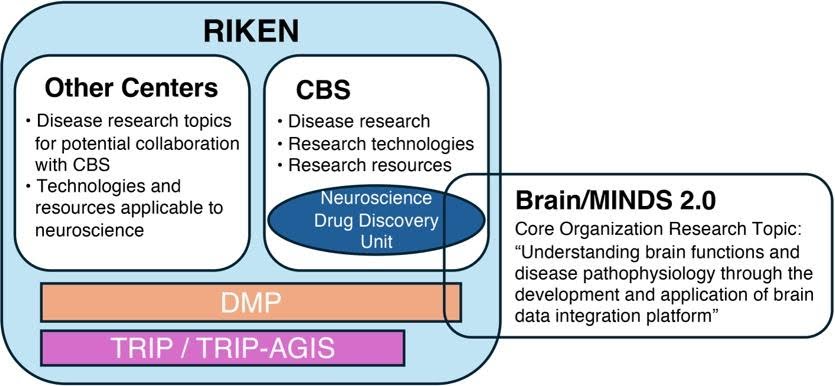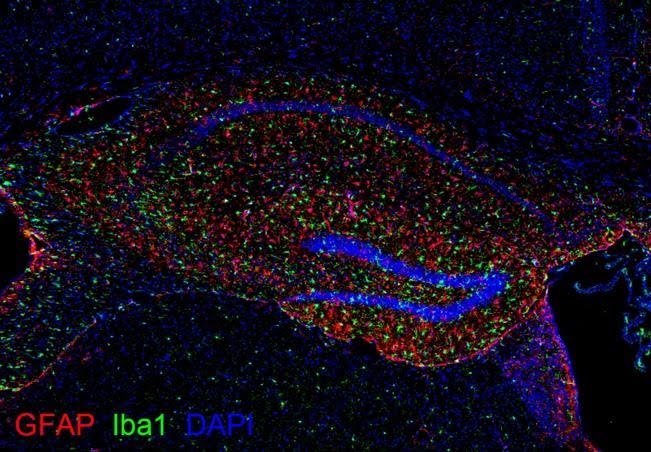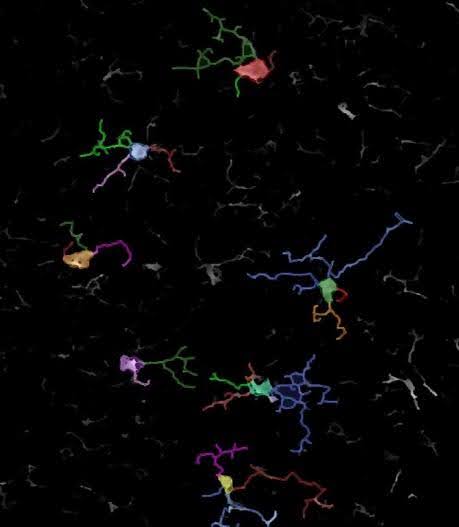Neuroscience Drug
Discovery UnitPathophysiological Research on Brain Diseases and Its Application to Drug Discovery
Neuroscience Drug Discovery Unit promotes drug discovery research in the field of neuroscience, collaborating also with the AMED program “Multidisciplinary Frontier Brain and Neuroscience Discoveries (Brain/MINDS 2.0)”. Through molecular biology, biochemistry and AI-assisted histopathological analysis using animal disease models and human cells/tissues, the Unit will elucidate pathophysiology of brain diseases and apply the findings to drug discovery.
1.Exploration of drug discovery seeds and technologies in neuroscience and contribution to their thematization
This Unit will engage in the search for drug discovery seeds and technologies in neuroscience as well as in their development into DMP themes, not only at Center for Brain Science (CBS) where the Unit belongs but also at other Centers (Fig. 1). Furthermore, in collaboration with AMED Brain/MINDS 2.0, the Unit will support social implementation of research results on dementia and psychiatric disorders, and will serve as a bridge to utilize the Brain/MINDS 2.0 database and “digital brain” for drug discovery research.

Fig. 1. Collaboration framework of the Unit
2.Strengthening the validation platform toward drug discovery for priority diseases in the fields of neurology and psychiatry
This Unit will strengthen the validation platform for drug discovery research, focusing on neurodegenerative diseases and developmental disorders.
- (1) Application and improvement of evaluation systems using animal disease models, human cells, “digital brain”, etc.
- ① Various types of evaluation using neuron/glia culture systems
- ② In vivo evaluation using disease model animals, e.g., genetically engineered marmosets for some neurodegenerative diseases
- ③ Evaluation using human disease-specific iPS cells
- ④ Utilization of the Brain/MINDS 2.0 database and “digital brain” toward drug discovery
- (2) Comprehensive and automated analysis of brain function, pathology, biochemistry, etc.
- ① Brain histopathology of neurodegenerative diseases (Fig. 2) and AI-based automation of quantitative analysis (Fig. 3)
- ② Biochemistry (analysis of aggregated proteins, quantification of biomarkers in body fluids, etc.)
- ③ Animal behavior analysis (automated analysis of marmosets in collaboration with TRIP-AGIS, etc.)
- ④ Utilization of other technical services provided by Research Resources Division (RRD)
- (3) Improvement of technology for evaluating the transferability of drug candidate compounds into the brain; Improvement of technology for drug delivery into the brain
- (4) Validation with patient brain samples

Fig. 2. Inflammation in the hippocampus of
a mouse model of neurodegenerative disease

Fig. 3. Morphology of mouse
hippocampal microglia
automatically recognized by AI

